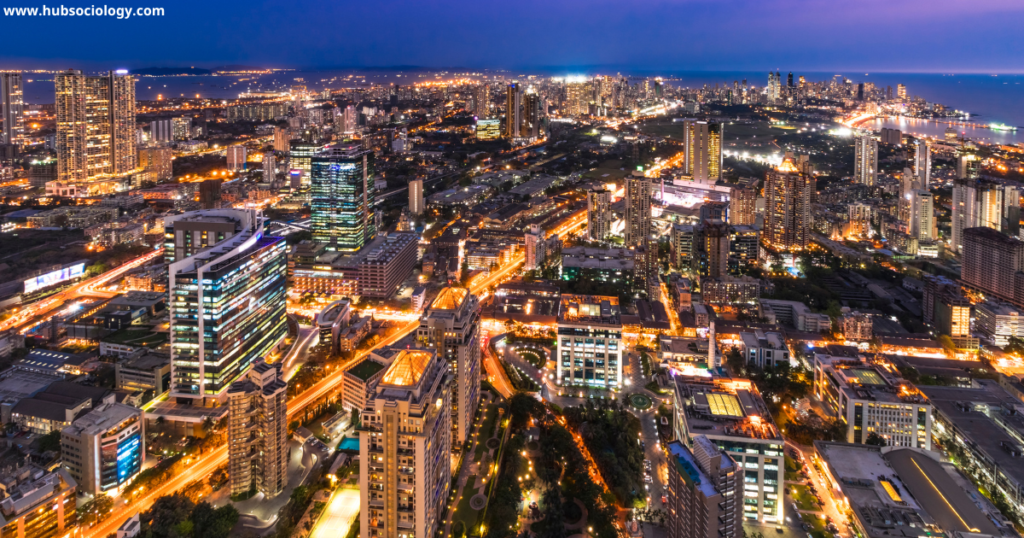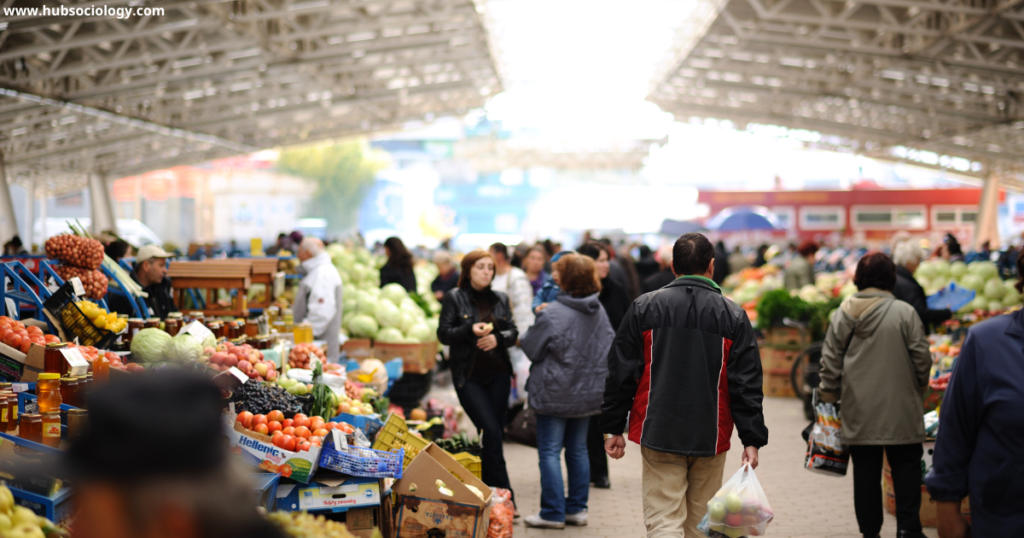Urban India has witnessed a significant transformation in its social and spatial landscape over the past few decades, with the rise of gated communities becoming a defining feature of this change. These enclosed residential complexes, often equipped with modern amenities and security features, have become synonymous with the aspirations and lifestyles of the burgeoning middle class. The proliferation of gated communities in cities like Mumbai, Delhi, Bangalore, and Hyderabad reflects broader socio-economic and cultural shifts in Indian society. This article explores the sociological dimensions of the middle class’s affinity for gated communities, examining the factors driving this trend, its implications for urban social life, and the broader consequences for Indian society.

The Rise of the Middle Class in Urban India
The Indian middle class, often referred to as the “New Middle Class,” has grown significantly since the economic liberalization of the 1990s. This class is characterized by its disposable income, consumerist aspirations, and desire for upward mobility. The liberalization policies opened up new economic opportunities, leading to the expansion of industries such as information technology, finance, and services. These sectors created a new class of professionals who sought to distinguish themselves from the traditional working class through their lifestyles, consumption patterns, and residential choices.
The middle class in urban India is not a homogeneous group; it encompasses a wide range of occupations, income levels, and cultural practices. However, what unites this diverse group is a shared aspiration for security, privacy, and a modern lifestyle. Gated communities, with their promise of exclusivity and comfort, have emerged as the ideal residential choice for this class.
Gated Communities: A Symbol of Aspiration and Identity
Gated communities are residential complexes that are physically separated from their surroundings by walls, fences, or gates. They often feature amenities such as swimming pools, gyms, parks, and clubhouses, and are managed by Resident Welfare Associations (RWAs) or private management companies. These communities are designed to provide a controlled environment that offers safety, cleanliness, and a sense of community.
For the middle class, gated communities represent more than just a place to live; they are a symbol of social status and identity. In a rapidly urbanizing and globalizing India, where traditional markers of identity such as caste and religion are increasingly being supplemented by class and consumption, gated communities serve as a visible marker of one’s position in the social hierarchy. Living in a gated community is seen as a way to distinguish oneself from the “chaos” of the city and to align oneself with global standards of living.

The Appeal of Gated Communities: Security, Privacy, and Exclusivity
One of the primary reasons for the popularity of gated communities among the middle class is the promise of security. In a context where urban crime rates are perceived to be high, and public spaces are often seen as unsafe, gated communities offer a sense of safety and protection. The presence of security guards, CCTV cameras, and controlled access points reassures residents that they and their families are safe from external threats.
Privacy is another key factor driving the demand for gated communities. In densely populated urban areas, where space is at a premium, gated communities offer a respite from the overcrowding and noise of the city. The private amenities within these communities allow residents to enjoy leisure activities without having to venture into public spaces, which are often seen as dirty, chaotic, or unsafe.
Exclusivity is also a significant draw. Gated communities are often marketed as “elite” spaces, accessible only to those who can afford them. This exclusivity appeals to the middle class’s desire for social distinction and upward mobility. By living in a gated community, residents can distance themselves from the “masses” and align themselves with a more affluent and cosmopolitan social group.
The Social Dynamics of Gated Communities
While gated communities offer a range of benefits to their residents, they also have important social implications. One of the most significant is the way they reinforce social segregation. Gated communities are often homogenous spaces, inhabited by people of similar class backgrounds, occupations, and lifestyles. This homogeneity can lead to the creation of social bubbles, where residents have limited interaction with people from different social strata.
This segregation is not just physical but also social and cultural. Residents of gated communities often share similar values, attitudes, and consumption patterns, which can reinforce a sense of group identity but also lead to the exclusion of those who do not fit in. This can exacerbate social inequalities and create a sense of “us versus them” between those who live inside the gates and those who live outside.
Another important aspect of the social dynamics of gated communities is the role of Resident Welfare Associations (RWAs). These associations, which are responsible for managing the community and maintaining its amenities, often play a significant role in shaping the social life of the community. RWAs can foster a sense of community and collective identity among residents, but they can also be exclusionary, enforcing strict rules and regulations that may marginalize certain groups, such as renters or lower-income residents.
The Impact on Urban Social Life
The rise of gated communities has had a profound impact on urban social life in India. One of the most significant consequences is the privatization of public space. As more and more middle-class residents retreat into gated communities, public spaces such as parks, streets, and markets are increasingly being abandoned or neglected. This can lead to a decline in the quality of public life and a loss of the vibrancy and diversity that characterize urban spaces.

Gated communities also contribute to the fragmentation of the city. By creating self-contained enclaves that are physically and socially separated from their surroundings, gated communities can undermine the sense of a shared urban identity. This fragmentation can have negative consequences for social cohesion and civic engagement, as residents of gated communities may feel less connected to the broader city and less invested in its well-being.
Another important impact of gated communities is on the urban poor. As the middle class retreats into gated communities, the urban poor are increasingly marginalized and pushed to the periphery of the city. This can lead to the creation of “dual cities,” where the affluent live in well-maintained, secure enclaves, while the poor are relegated to informal settlements or slums with inadequate infrastructure and services. This spatial segregation reinforces existing social inequalities and can lead to social tensions and conflicts.
Conclusion
The rise of gated communities in urban India is a reflection of the aspirations and anxieties of the middle class in a rapidly changing society. These communities offer a range of benefits, including security, privacy, and exclusivity, which appeal to the middle class’s desire for upward mobility and social distinction. However, they also have important social implications, including the reinforcement of social segregation, the privatization of public space, and the marginalization of the urban poor.
As India continues to urbanize and modernize, the trend towards gated communities is likely to continue. However, it is important to critically examine the social consequences of this trend and to consider how urban planning and policy can promote more inclusive and equitable forms of urban development. By fostering a sense of shared urban identity and ensuring that all residents have access to quality public spaces and services, cities in India can become more vibrant, diverse, and socially cohesive. The challenge for urban India is to find a balance between the aspirations of the middle class and the needs of the broader society, ensuring that the benefits of urbanization are shared by all.

1 thought on “Middle Class and Gated Communities in Urban India”